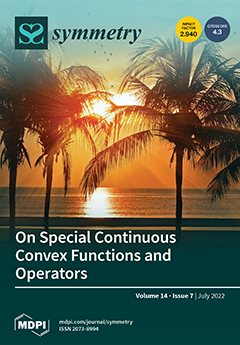In recent years, the
m-polar fuzziness structure and the cubic structure have piqued the interest of researchers and have been commonly implemented in algebraic structures like groupoids, semigroups, groups, rings and lattices. The cubic
m-polar (
) structure
[...] Read more.
In recent years, the
m-polar fuzziness structure and the cubic structure have piqued the interest of researchers and have been commonly implemented in algebraic structures like groupoids, semigroups, groups, rings and lattices. The cubic
m-polar (
) structure is a generalization of
m-polar fuzziness and cubic structures. The intent of this research is to extend the
structures to the theory of groups and semigroups. In the present research, we preface the concept of the
groups and probe many of its characteristics. This concept allows the membership grade and non-membership grade sequence to have a set of
m-tuple interval-valued real values and a set of
m-tuple real values between zero and one. This new notation of group (semigroup) serves as a bridge among
structure, classical set and group (semigroup) theory and also shows the effect of the
structure on a group (semigroup) structure. Moreover, we derive some fundamental properties of
groups and support them by illustrative examples. Lastly, we vividly construct semigroup and groupoid structures by providing binary operations for the
structure and provide some dominant properties of these structures.
Full article





